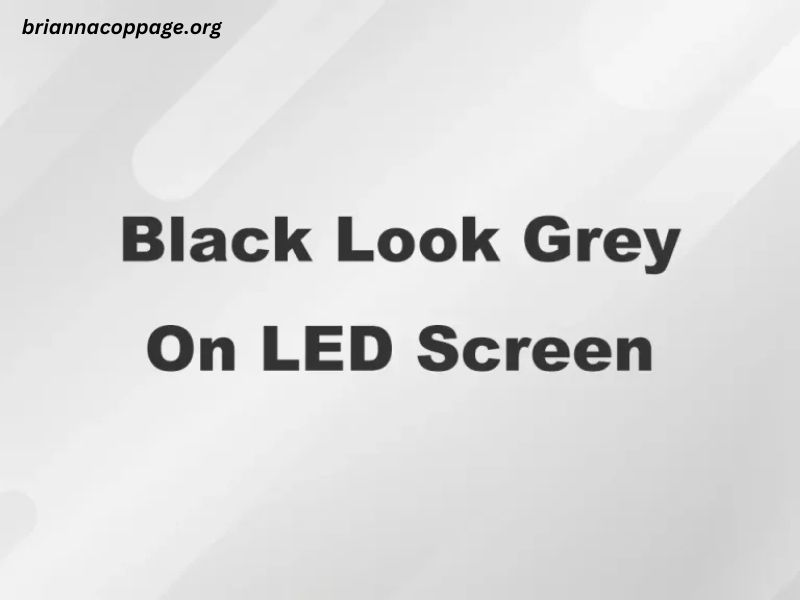Light-emitting diode (LED) technology has revolutionized the way we experience visual displays, offering impressive brightness, energy efficiency, and durability. However, one question that often arises among tech enthusiasts and consumers is: Why can’t LED displays show true black? This limitation has been a significant factor in the development of newer display technologies like OLED, which can achieve true blacks. In this article, we’ll explore the reasons behind this limitation, the science of display technologies, and how manufacturers are working to address the challenge.
Understanding LED Display Technology
To understand why LED displays struggle with true black, it’s essential to know how these displays work. Most LED displays are based on a technology called LCD-LED, which stands for Liquid Crystal Display with LED backlighting.
How LED Displays Work
- Backlight: At the core of an LED display is a backlight system, which is typically made up of white LEDs. This backlight provides the illumination needed for the screen to display images.
- Liquid Crystal Layer: Above the backlight is a liquid crystal layer, which manipulates the light to create colors and images.
- Filters: Filters and polarizers are used to produce different colors by controlling how much light passes through each pixel.
While this design enables LED displays to produce vivid and colorful images, it also creates an inherent limitation: the backlight cannot be turned off for individual pixels. Even in dark scenes, the backlight remains active, leaking light through the screen and preventing true black from being displayed.
The Problem with True Black
What Is True Black?
True black refers to the absence of any light being emitted from a pixel. For a display to show true black, it must completely block or eliminate light in areas where black is required.
Why LED Displays Can’t Achieve True Black
- Backlight Bleed: Since the entire screen is illuminated by a single backlight system, even when a pixel is supposed to be black, some light still leaks through. This phenomenon is known as backlight bleed or light leakage.
- Inefficient Light Blocking: The liquid crystal layer can only block a portion of the light. It’s impossible for it to block 100% of the backlight, leading to a washed-out black appearance, often described as “grayish-black.”
How OLED Achieves True Black
In contrast to LED displays, Organic Light Emitting Diode (OLED) technology can achieve true black because of its fundamentally different design. Each pixel in an OLED display is self-emissive, meaning it generates its own light.
- Individual Pixel Control: In an OLED display, each pixel can be turned on or off independently. When a pixel is off, no light is emitted, resulting in perfect black.
- No Backlight: Since OLED displays don’t require a backlight, there’s no risk of light leakage.
This capability has made OLED the preferred technology for high-end TVs, smartphones, and other premium devices where deep blacks and high contrast are crucial.
Types of LED Displays and Their Limitations
Not all LED displays are created equal. Manufacturers have developed different LED display technologies to improve black levels and overall image quality. Here’s a look at some of the most common types:
1. Edge-Lit LED Displays
In edge-lit LED displays, the backlight is positioned around the edges of the screen. While this design allows for thinner displays, it exacerbates the problem of backlight bleed, as light must be distributed across the entire screen.
2. Direct-Lit LED Displays
Direct-lit LED displays use an array of LEDs placed behind the screen. This configuration reduces some backlight issues but still doesn’t solve the problem of true black because the backlight cannot be turned off completely.
3. Full-Array Local Dimming (FALD) LED Displays
Full-array LED displays use local dimming zones to control the brightness in different parts of the screen. While FALD technology improves black levels by dimming specific zones, it still can’t achieve the pixel-level control of OLED. There’s also a risk of halo effects, where bright objects cause light to spill into surrounding dark areas.
Advances in LED Technology
Despite its limitations, LED technology continues to evolve. Manufacturers have developed advanced techniques to improve black levels and compete with OLED:
1. Mini-LED
Mini-LED technology uses smaller LEDs for the backlight, allowing for more precise dimming zones. This results in improved contrast and darker blacks compared to traditional LED displays. However, mini-LED still relies on a backlight system, so it cannot achieve true black.
2. Micro-LED
Micro-LED is a groundbreaking technology that combines the self-emissive properties of OLED with the durability and brightness of LED. Each micro-LED pixel can emit its own light and be turned off completely, allowing for true black. However, this technology is still in its early stages and is expensive to produce.
3. Quantum Dot LED (QLED)
QLED displays enhance LED technology by using a quantum dot layer to improve color accuracy and brightness. While QLED offers stunning visuals, it still relies on a backlight and faces the same issues with true black.
Why True Black Matters
The ability to display true black is more than just a technical achievement; it has a significant impact on the overall viewing experience:
1. Improved Contrast
True black enhances contrast ratios, making bright areas appear more vivid and lifelike. This is particularly important in HDR (High Dynamic Range) content.
2. Better Color Accuracy
When black levels are accurate, colors appear more vibrant and realistic.
3. Immersive Viewing
Deep blacks contribute to a more immersive viewing experience, especially in dark environments.
Use Cases Where True Black Is Crucial
Certain applications benefit greatly from the ability to display true black:
- Home Theaters: For movie enthusiasts, deep blacks are essential for replicating the cinematic experience.
- Gaming: In games with dark environments, true black adds depth and realism.
- Professional Displays: Designers and photographers need precise black levels for accurate color grading.
The Trade-Offs
While OLED and similar technologies can achieve true black, they come with their own set of challenges:
1. Cost
OLED displays are generally more expensive to produce, making them less accessible to budget-conscious consumers.
2. Durability
OLED screens are prone to burn-in, where static images can leave permanent marks on the display.
3. Brightness
LED displays are typically brighter than OLED, making them better suited for well-lit environments.
The Future of Display Technology
The quest for true black has driven innovation in display technology. As micro-LED and other emerging technologies mature, we may see displays that combine the best features of LED and OLED: high brightness, durability, and true black.
In the meantime, manufacturers continue to refine LED displays with techniques like improved local dimming and mini-LED backlighting to close the gap.
Conclusion
While LED displays excel in many areas, their reliance on a backlight system prevents them from achieving true black. This limitation has paved the way for technologies like OLED and micro-LED, which offer superior black levels and contrast. However, the choice between LED and OLED often comes down to individual preferences, use cases, and budget.
As technology advances, the gap between LED and true black continues to narrow, promising an exciting future for display innovation. Whether you’re a casual viewer or a tech enthusiast, understanding these differences helps you make informed decisions about the best display for your needs.






